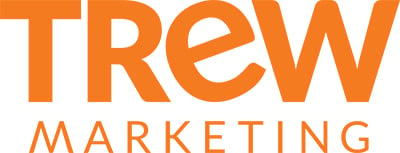4 min read
Why Cost Per Lead (CPL) Matters: Optimizing Your B2B Engineering Marketing Spend
 Erin Moore
:
7/9/24 10:00 AM
Erin Moore
:
7/9/24 10:00 AM
Every marketing dollar counts. Attracting qualified leads who understand your complex solutions requires a strategic approach. But with a multitude of marketing channels at your disposal, how can you ensure you're investing in the most effective ones?
This is where understanding your Cost Per Lead (CPL) becomes crucial. CPL reveals the average amount you spend to acquire a single lead through a specific channel. Engineering and technical industries face unique challenges for lead generation, such as longer sales cycles and complex buyer journeys. CPL can help engineering companies overcome these challenges by providing valuable insights into the effectiveness of their marketing and recruitment efforts, ultimately maximizing return on investment (ROI).
%20Matters.webp?width=1000&height=600&name=Why%20Cost%20Per%20Lead%20(CPL)%20Matters.webp)
What is Cost Per Lead (CPL)?
Cost per lead (CPL) is a metric used in marketing to measure the effectiveness of your efforts in generating new potential customers, also known as leads. It tells you how much money you spend on average to acquire a single lead.
Here's how it works:
- Cost: This refers to the total amount you spend on your marketing campaigns during a specific period. This could include spending on advertising platforms like Google Ads or social media ads, content creation, or even marketing tools.
- Leads: These are individuals who have shown some interest in your product or service. This could be someone who signs up for your email list, downloads a white paper, or clicks on an ad and fills out a contact form.
Calculating CPL is a straightforward process. Here's the formula:
CPL = Total Marketing Spend / Number of Leads Generated
For example, if you spend $1,000 on a campaign and it generates 100 leads, your CPL would be $10 per lead.
Once you have your CPL figures, analyze them in the context of your target audience and industry benchmarks. Here are some additional factors to consider:
- Lead Quality: Not just quantity! Consider the conversion rate of leads from each channel. Are leads from a specific channel more likely to convert into sales? If so, they may be worth paying a higher CPL to obtain.
- Sales Cycle Length: B2B engineering sales cycles can be lengthy. Track how leads from each channel nurture and progress through your sales funnel. Your CPL may change over time as that initial investment yields future leads, especially in the case of evergreen content.
- Industry Benchmarks: Research average CPLs for B2B engineering companies in your industry. This provides a baseline to compare your performance.
A lower CPL generally indicates a more efficient marketing campaign, as you're spending less money to acquire each lead. However, an expensive campaign might generate high-quality leads that are more likely to convert into sales, even if the CPL is higher. This is why it’s important to track not just the number of leads initially, but also MQLs, SQLs, and eventual opportunities and sales to get insight into how successful a channel is.
Once the calculation is complete, companies can then:
- Identify the Best Performers: Is your social media campaign generating a high volume of leads at a low cost, or is your trade show presence yielding few qualified leads at a hefty price tag? CPL sheds light on which channels are delivering the most bang for your buck.
- Optimize Your Budget: With CPL data, you can strategically allocate your marketing budget. Channels with a lower CPL might warrant increased investment, while those with a high CPL might require reevaluation or optimization.
- Focus on Quality Leads: Not all leads are created equal. CPL helps you understand the cost of acquiring qualified leads – those with a higher propensity to convert into paying customers. By focusing on channels that deliver qualified leads, you can improve your sales pipeline.
Why CPL Matters for B2B Engineering Companies
Here’s how CPL helps engineering firms:
- Target the right talent: Many engineering firms rely heavily on finding qualified engineers to fill specific project needs. Marketing and recruitment efforts often target potential candidates. CPL helps them track how efficiently they're attracting qualified engineers to apply for open positions. By analyzing CPL for different recruiting channels (e.g., job boards, career fairs, employee referrals), they can optimize their recruitment spend and target the most effective channels.
- Win more clients: Generating leads for potential clients can involve content marketing, digital advertising, contributed content, organic social media, or attending trade shows. Understanding their CPL for acquiring new client leads allows them to assess the cost-effectiveness of their sales funnel. They can then focus their efforts on strategies that bring in high-value clients at a reasonable cost.
- Market to the right audience: Some engineering firms specialize in particular areas or have unique areas of expertise. CPL helps them understand how effectively they're reaching the right audience for their specific services. By tracking CPL for targeted marketing campaigns, they can ensure they're attracting leads who are a good fit for their area of expertise.
By leveraging CPL data, engineering firms can make smarter decisions about resource allocation and focus on strategies that bring in the most value at the lowest cost.
Optimizing Your Marketing Strategy with CPL
Let’s take a look at what this looks like in practice. In this scenario, you’re a B2B engineering company that sells industrial automation software. We have included the cost of team time or outsourcing below, but you can also run a simplified version of this using solely ad budget, trade show fees, etc.
Paid Advertising
You run a targeted online advertising campaign for three months. Here's the breakdown:
- Cost:
- Advertising Platform Budget: $5,000
- Landing Page: Content and Page development: $4,000
- Leads: Your paid advertising campaign generates 90 qualified leads to your website who download a white paper on industrial automation trends, providing their contact information.
- Cost Per Lead: $9,000 (total cost) / 90 (leads generated) = $100 per lead
Industry Trade Show Participation
You participate in a major industry trade show. Here's a breakdown:
- Cost:
- Booth rental: $10,000
- Travel & Accommodation: $5,000
- Marketing Materials: $2,000
- Staff Time: (assuming 3 staff at $200/day for 3 days) $1,800
- Leads: Through booth conversations and badge scans, you collect contact information from 100 potential customers.
- Cost Per Lead: $18,800 (total cost) / 100 (leads generated) = $188 per lead
In this scenario, the paid advertising campaign generated qualified leads at a significantly lower cost per lead compared to the industry trade show. However, it's important to consider additional factors:
- Lead Quality: While the event generated a higher number of leads, were they all qualified decision-makers with a strong interest in your software? The trade show might have allowed for more in-depth conversations to assess lead quality.
- Brand Awareness: The trade show might have also served to boost brand awareness and industry recognition, which can't be measured by CPL alone.
CPL is a powerful metric that empowers B2B engineering companies to make informed marketing decisions. By tracking and analyzing CPL across different channels, you can identify the most effective ways to reach your target audience, generate qualified leads, and ultimately drive sales growth.
Learn how TREW can help develop a marketing strategy that maximizes your budget and return on investment.
TREW is a marketing agency dedicated to reaching engineering and technical audiences through a range of marketing initiatives. Contact us today to learn more about the services we offer.
SUBSCRIBE TO OUR BLOG FOR THE LATEST UPDATES
Erin Moore
 Erin has worked with 50+ technical companies across website strategy, content development, sales enablement, and marketing tool stack development. She’s a strategy-first marketer with a passion for persona development and a deep understanding of how marketing metrics tie into the bottom line. Erin holds a B.S. in public relations with a minor in anthropology from the University of Florida. She lives in Austin, TX, with her husband John and their dog and cat.
Erin has worked with 50+ technical companies across website strategy, content development, sales enablement, and marketing tool stack development. She’s a strategy-first marketer with a passion for persona development and a deep understanding of how marketing metrics tie into the bottom line. Erin holds a B.S. in public relations with a minor in anthropology from the University of Florida. She lives in Austin, TX, with her husband John and their dog and cat.
About TREW Marketing
TREW Marketing is a strategy-first content marketing agency serving B2B companies that target highly technical buyers. With deep experience in the design, embedded, measurement and automation, and software industries, TREW Marketing provides branding, marketing strategy, content development, and digital marketing services to help customers efficiently and effectively achieve business goals.



